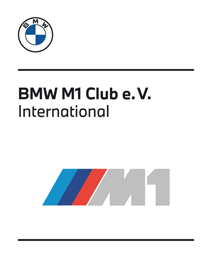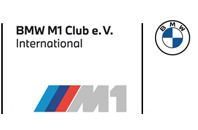Paul Rosche
“Camshaft Paul” or “Pope of Engines”

BMW Group archive: BMW M1 6-cylinder Motor
After graduating, he joined BMW in the engine development team under the supervision of Alex von Falkenhausen. As an engine designer, he was responsible for the production all engine lines at that time. From the beginning, he was part of the development of the 4-cylinder engines for the new 1500 and 1800 series, which derived from racing engines. One of his main jobs was calculating camshafts. This earned him the nickname “Camshaft Paul” from motorsports commentator Kalli Hufstadt. Since then, everyone in the world of engines and motorsports knows him as “Camshaft Paul” or the “Pope of Engines”.
At the end of the 1960s, he developed the turbocharger and the BMW 4-cylinder 2 litre turbocharged engine, which was used at many well-known racing events in 1969 in the BMW 2002, which won the Touring Car European Championship in 1969. This was followed by the development of the M60 6-cylinder engines for the 320i / 323i.
In 1975, he joined the newly founded BMW Motorsport GmbH. In 1976, he became head of development for sports engines. With his team, he developed the most successful 4-cylinder 4-valve F2 engine, with which 5 drivers won the European Formula Two Championship.
The F2 success, in which BMW was often faster than the F1 on the same racing track, awakened his ambition to enter Formula 1. After the initially strong resistance of BMW AG management, he received the ok. That’s how he came to lead BMW into the F1 twice with two different engines.
Based on the 4-cylinder F2 engine, the first F1 BMW turbo engine was developed, placed in the Brabham BT 52, and in 1983 – with driver Nelson Piquet – became the first F1 World Championship winner with a turbo engine.
The second F1 engine was the V 10-cylinder with approximately 750 hp. He and his team managed the BMW Williams F1 Team for the first 3 F1 races in the 2000 season. Straight away, Ralf Schumacher came in 3rd place in the first race in Melbourne. In succession Dr. Theissen and Gerhard Berger followed as BMW Williams F1 Team managers.
In the mid-1970s, the M1 engine was developed based on the 6-cylinder series engine block with the racing versions of group 4 and group 5. The engine’s special features included the divided cylinder head with 2 overhead camshafts with double-roller chain drive on the vertical block, dry sump lubrication, mechanical fuel injection, digital ignition, throttle control and 277 hp. The group 4 (Procar) and group 5 engines featured flat valve control and 470 respectively 850 to approximately 1000 hp.
The M3 S14 was one of his most successful engines. He took the engine block of the M1 engine and cut off the two rear cylinders and the cylinder head. The 4-cylinder engine was built into the M3 series with 220 – 230 hp. In motorsports, this engine was used for the German Touring Car Masters (DTM) and worldwide with 350 – 430 hp for rallies, short races, mountain races, and long races at the highest levels. It was the most successful racing engine. The motto was: 1000 races – 1000 wins!
Telemetry in motorsports was developed by him in test drives for development stages and new engines and has become indispensable today.
Paul Rosche wanted to know exactly what happens in engines during races when they are at full power. The printer for the telemetry at the time produced metre-long paper trails with diagrams on filling rates, ignition and combustion processes, temperatures in the combustion chambers and gas exchange.
He often could not wait until he was back in his office and workshops to evaluate the trails of paper. His closest colleagues at the time still remember how on long return flights after races overseas and in the far east, he would roll out the metre-long paper roles in the airplane aisle – to the astonishment of the crew and passengers – so he and his colleagues – who were sliding around on their knees – could read and analyse the diagrams. His colleagues thus did not have the opportunity to take a nap or read during the long flights.
He also never said “I”, but rather “we”, meaning him and his colleagues.
Electronic-hydraulically adjustable camshafts to increase performance, optimised emission levels, improved idling behaviour and reduced fuel consumption for variable valve timing (VANOS) in manufactured and high-performance engines since the early 90s were also based on his ideas. His principle was always to build a durable and reliable engine with the highest performance and the lowest possible fuel consumption. The visual design of his engines – series, sports and racing engines – was always a highlight, even for non-techies.
His masterpieces include the V12-cylinder racing engines used in the McLaren F1 and BMW V12 LM, which won the 1999 24-hour race at Le Mans, and the V12 LMR with Team Schnitzer.
In 1979, he became Technical Director at BMW Motorsport GmbH.
From 1987 – 1996, he was Technical Director at BMW M-GmbH.
And from 1996 – 1999, he was Technical Director and CEO of BMW Motorsports Ltd.
He was a brilliant combustion-engine engineer, as well as a respectful and helpful leader, for him his employees would walk through “fire”.
Josef Hintner
and Co.: Raimund Kupferschmid (one of Paul Rosche’s closest colleagues from 1976 – 2016)






